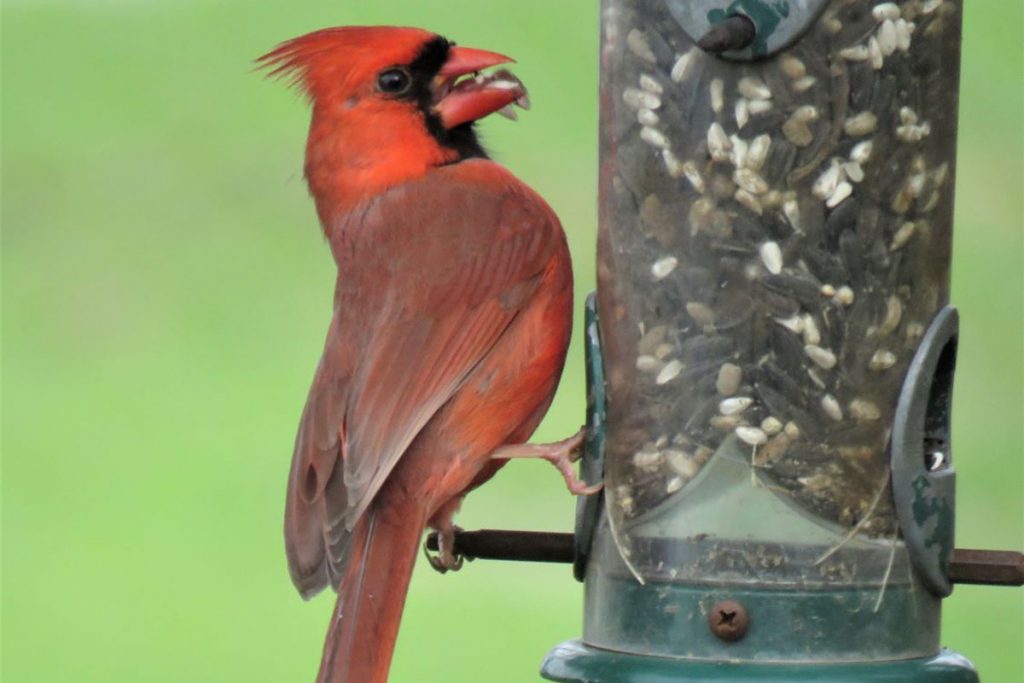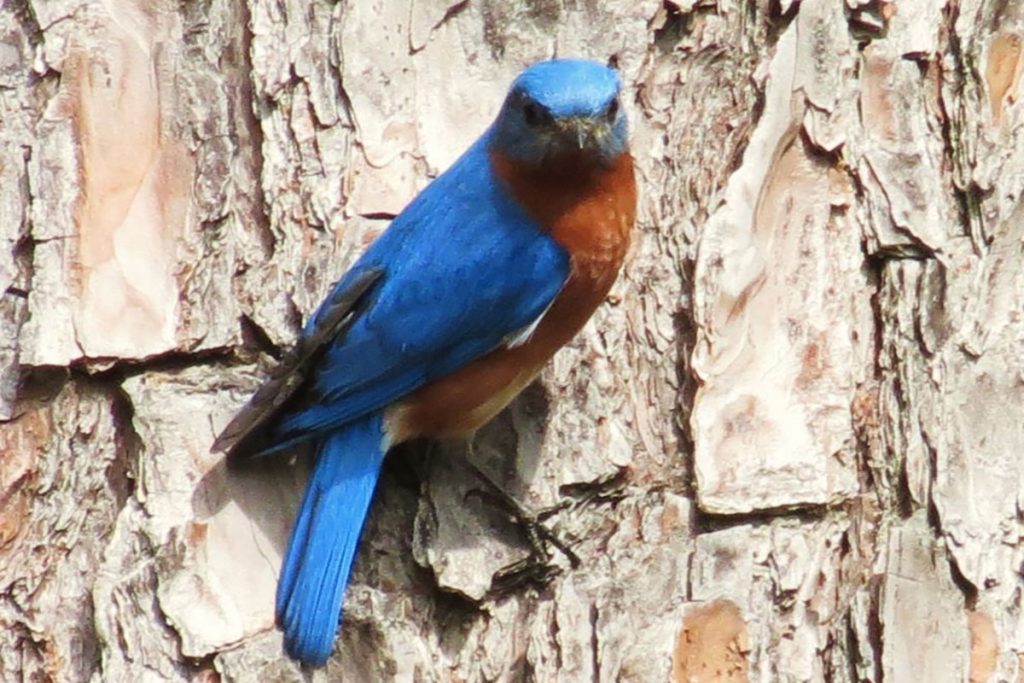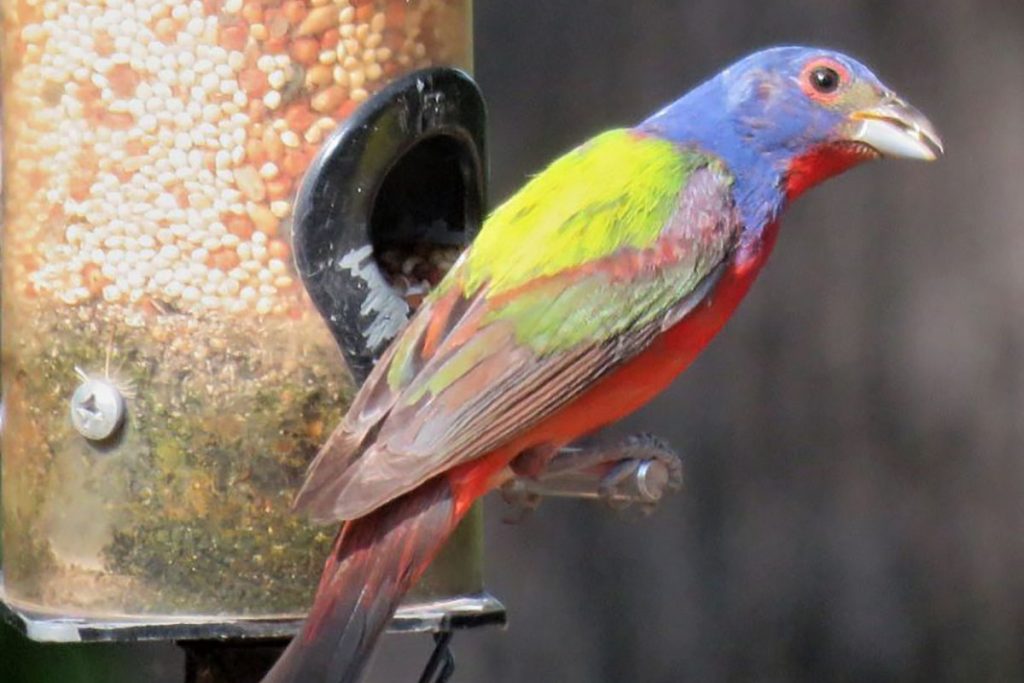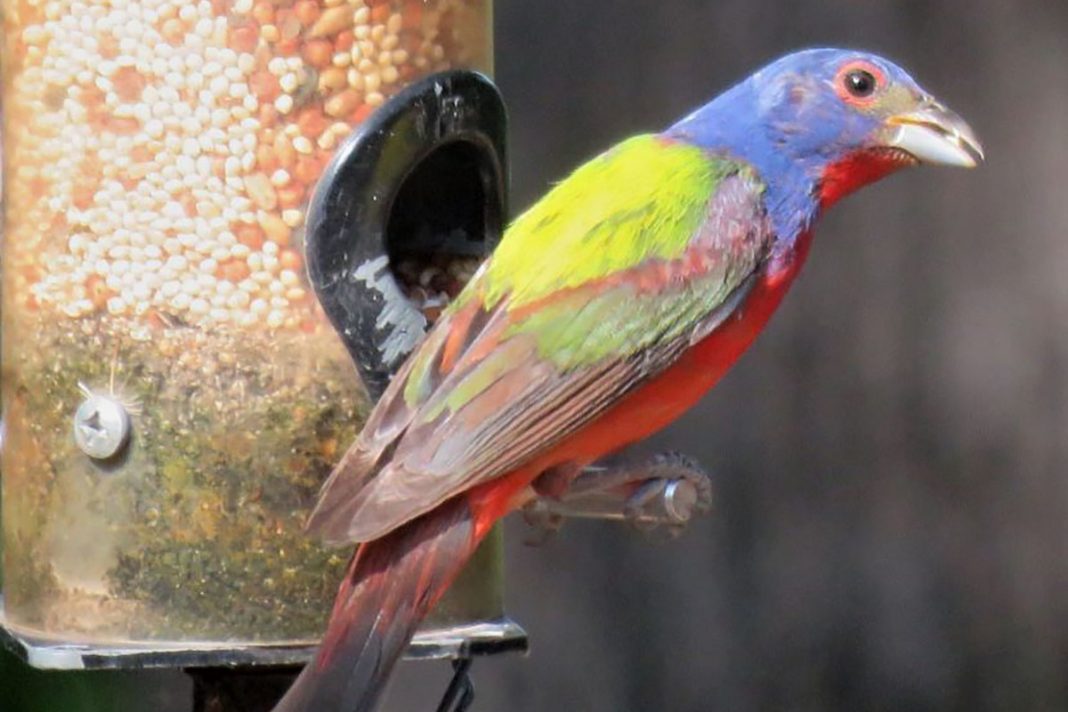
Birds can be such glorious colors…reds, blues, greens, oranges, yellows, and some are even iridescent! We humans see a particular feather color because that is the color reflected back to our eyes, while all other colors in the spectrum are absorbed by the feathers. But it becomes even more complex because the feather color we see happens in two ways. One way is due to pigmentation, and the other is due to microscopic feather structure.

Those bold red feathers of a male cardinal and the pink feathers of a flamingo are created by what they eat. Seeds, insects, plants and crustaceans all have carotenoids, which are fat soluble red-orange-yellow pigments. These colorful pigments are absorbed into some birds’ systems. Birds such as cardinals and flamingos are able to process the pigment so the color permeates their bodies and feathers. In flamingos the pink is caused by the crabs, crustaceans and algae they eat. In cardinals it’s plants, seeds and insects. If you found a feather from either bird and crushed it to a powder, you would see red or pink powder because those pigments are disbursed throughout their feathers. Additionally, a melanin pigment naturally occurs in birds (and humans) which causes feathers to be primarily brown and/or black. Finally, some birds can produce green feathers due to the amino acids, or porphyrins, in their systems. In short, what birds eat and how their bodies process food give their feathers almost all the colors in the crayon box. Almost all, except for blue!


Blue. Now there is a bird of a different color! In nature there is no blue pigment in blue feathers…not in bluebirds, blue jays, parrots or any bird with blue feathers! So why do we see blue if there is no blue pigment? Blue is created when light hits the birds’ unusual microscopic feather structure, and all the colors of the light spectrum that humans can see are absorbed, except for blue. Blue is reflected back, and therefore is what we see. If a molted blue feather is crushed into powder thereby destroying the feather structure, we would only see a pile of brown dust! Amazing! Blue feathers are truly an optical trick. In addition, the iridescence seen in some birds – the chin of a hummingbird, the shimmer of a green-headed mallard – is also caused by feather microstructure rather than pigmentation. To create iridescent feathers light is refracted off of a special feather structure, as if it were a prism, making the feathers shimmer and glow.

This leads us finally to the painted bunting. These males are a dazzle of colors! They not only have that special feather microstructure that makes us see blue, they also have all possible types of biochemical pigmentation! It’s all mixed and jumbled in this one bird, and we see amazing feathers of red, green, yellow, orange, and blue. A painted bunting is a living rainbow! Learn more about the incredible nature in our area by joining a chapter of the Texas Master Naturalist organization. To find a chapter close to you, or to read about the state program, go online to www.txmn.org. Volunteer and get involved!















